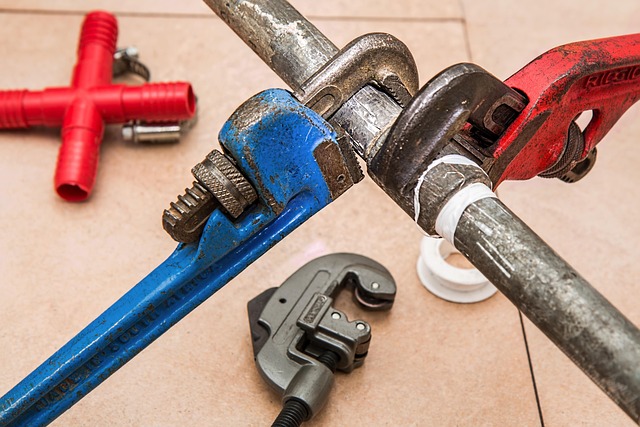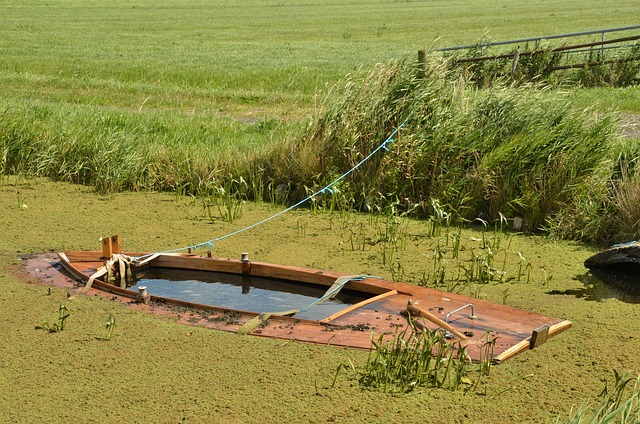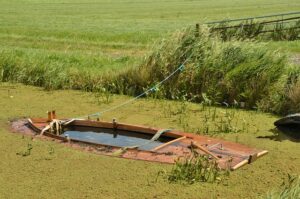Water line leaks, caused by corrosion and loose joints, lead to waste, higher bills, and structural damage. Traditional leak detection methods are time-consuming and inaccurate. Modern technology, like smart sensors and IoT devices, offers real-time monitoring and precise leak identification. Non-invasive techniques such as acoustic detection and thermal imaging minimize infrastructure damage. Homeowners should regularly check for signs of leaks and use water-efficient fixtures; professionals use advanced tools for complex systems. Advanced leak detection systems have proven successful in reducing water losses and disruptions in various settings, with notable examples achieving significant reductions within a year.
Water line leaks are a common yet costly issue for homeowners and businesses alike. Understanding the causes and effects is the first step towards prevention. Traditional leak detection methods have evolved, incorporating advanced technology for more efficient identification. Non-invasive techniques offer a cost-effective solution. This article explores these topics, providing insights on successful implementation of leak detection systems, with a focus on preventing water waste through proactive measures.
Understanding Water Line Leaks: Common Causes and Effects

Water line leaks can go unnoticed for extended periods, causing subtle yet significant damage. Understanding their common causes is essential for effective leak detection. One primary reason is corrosion, often accelerated by harsh environmental conditions, such as extreme temperatures or acidic water. Over time, metal pipes weaken and develop cracks, leading to gradual leakage. Another frequent cause involves pipe joints and fittings that loosen due to movement or improper installation, allowing water to escape at these weak points.
The effects of water line leaks are multifaceted. Firstly, they result in wastage of a precious resource, increasing water bills and contributing to environmental concerns. More importantly, continuous seepage can lead to structural damage within homes or buildings, as moisture erodes insulation, drywall, and even foundation walls. Additionally, leaks may indicate more severe underlying issues, such as pipe damage from rodents or root intrusion, which require professional attention for long-term prevention.
Traditional Leak Detection Methods: A Comprehensive Overview

Traditional leak detection methods have long relied on a combination of visual inspection, auditory cues, and manual testing. Visual inspections involve examining pipes for signs of corrosion, cracks, or bulges, while listening for unusual sounds like dripping water can point to potential leaks. Manual testing, such as applying pressure to pipes or using specialized tools to detect pressure changes, has been a standard practice. However, these methods are often time-consuming and may not capture all leaks, especially those hidden within complex piping systems.
Additionally, traditional techniques might not always be effective in identifying the exact source of a leak, making it challenging for repair teams to pinpoint and fix the problem efficiently. This is where modern advancements in technology have played a transformative role, leading to more accurate and rapid leak detection methods that are revolutionizing the industry.
Advanced Technology in Water Leak Detection Systems

In today’s digital era, advanced technology has revolutionized water leak detection systems, enhancing efficiency and accuracy. One prominent innovation is the integration of smart sensors and Internet of Things (IoT) devices that can detect even the slightest anomalies in water flow patterns. These sensors continuously monitor water pressure, temperature, and volume, sending real-time data to centralized systems for analysis. This allows for immediate leak detection, enabling prompt action before substantial damage occurs.
Additionally, remote monitoring and advanced analytics play a crucial role. By utilizing cloud-based platforms, utility companies can track and manage large networks of water infrastructure from a central location. Advanced algorithms analyze vast amounts of data to identify patterns and predict potential leaks, making leak detection more proactive than reactive. This not only minimizes water waste but also reduces the financial burden associated with repairing leaks after they have caused significant damage.
Non-Invasive Leak Detection Techniques: An Effective Approach

Non-invasive leak detection techniques have emerged as an effective and efficient approach to identifying water line leaks, offering a multitude of benefits over traditional methods. These advanced strategies allow for thorough inspection without causing any damage or disruption to the surrounding infrastructure. By utilizing specialized equipment and innovative technologies, professionals can detect even the smallest leaks, minimizing water waste and preventing costly repairs.
One prominent non-invasive method is acoustic detection, which employs sound waves to pinpoint leak locations. This technique takes advantage of the unique sounds produced by flowing water, enabling experts to identify anomalies that suggest a potential leak. Additionally, thermal imaging cameras are invaluable tools for visual inspections, as they can detect temperature variations caused by water seepage, providing crucial visual evidence for precise leak detection.
The Role of Homeowners and Professionals in Preventing Water Wasted

Homeowners play a pivotal role in preventing water wastage by being proactive about leak detection. Regularly checking for any signs of leaks, such as damp spots or strange noises, can help identify potential issues early on. Addressing small leaks promptly prevents them from escalating into major problems that could lead to significant water waste and costly repairs. Implementing simple measures like installing water-efficient fixtures and appliances, fixing dripping taps, and ensuring proper insulation around pipes can make a substantial difference in reducing water consumption.
Professionals, including plumbers and leak detection specialists, are equally crucial in the fight against water wastage. They possess advanced tools and expertise to detect even hidden leaks within complex plumbing systems. Regular professional inspections can uncover potential problems that might go unnoticed by homeowners. By staying proactive and engaging professionals for regular maintenance, communities can collectively reduce their water footprint, ensuring a more sustainable future.
Case Studies: Successful Implementation of Leak Detection Solutions

Water line leaks can cause significant damage and financial loss, but successful implementation of leak detection solutions offers effective prevention. Case studies highlight the positive impact of advanced technologies like smart meters, fiber-optic sensors, and AI-driven analytics. These systems detect subtle changes in water flow, enabling quick identification and repair of leaks before they escalate.
For instance, a major city implemented a real-time leak detection system, resulting in a 30% reduction in water losses within the first year. Another case involved a rural community that deployed fiber-optic sensors along its distribution network, leading to a 25% decrease in leak-related disruptions and substantial savings on maintenance costs. These examples demonstrate the efficiency and effectiveness of modern leak detection solutions in various settings.
